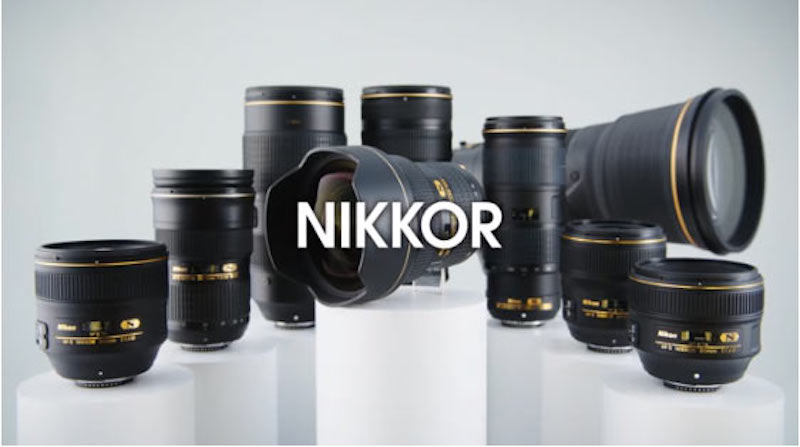Nikon has announced that they have produced a total of 95 million interchangeable Nikkor lenses.
As the 85 millionth interchangeable Nikkor lens was manufactured in January 2014, this means that Nikon produced no less than 10 million interchangeable lenses in a bit more than 1.5 years.
Earlier this year Nikon announced the AF-S Nikkor 300mm f/4E PF ED VR – the fixed focal length telephoto lens was the first Nikkor lens that adopted a PF lens element.
The two new professional super-telephoto lenses; the AF-S Nikkor 500mm f/4E FL ED VR and AF-S Nikkor 600mm f/4E FL ED VR are helping Nikon reach the production milestone. Also contributing to this achievement was the AF-S DX Nikkor 16-80mm f/2.8-4E ED VR DX-format zoom lens.
NIKKOR REACHES 95 MILLIONTH LENS MILESTONE
TOKYO – Nikon Corporation is pleased to announce that total production of NIKKOR lenses*1 for Nikon interchangeable lens cameras reached ninety-five million in the middle of July, 2015.
In 1959, Nikon (then Nippon Kogaku K.K.) released the Nikon F, as well as its first NIKKOR lenses for Nikon SLR cameras, including the NIKKOR-S Auto 5cm f/2. The NIKKOR tradition has continued over the many years since those first lenses were released.
Nikon actively releases new NIKKOR lenses that utilize the superior optical technologies it has cultivated over its long history as well as a variety of technologies developed exclusively by Nikon, including its anti-reflection coating, Nano Crystal Coat, PF (Phase Fresnel) lens elements with superior chromatic aberration compensation capability that makes lenses smaller and lighter, fluorite lens elements that offer superior chromatic aberration compensation and make telephoto lenses more compact, and fluorine coat, which effectively repels a variety of contaminants, such as dust and dirt, water, oils, and grease.
Nikon continues its steady success, reaching total lens production—including those produced with expansion of its lineup of interchangeable lenses for Nikon 1, Advanced Camera with Interchangeable Lenses, the first of which was released in October, 2011—of ninety million at the end of October, 2014.
One of Nikon’s lenses released this year is the AF-S NIKKOR 300mm f/4E PF ED VR, released in January, 2015. This fixed focal length telephoto lens, compatible with Nikon FX-format digital SLR cameras, was the first NIKKOR lens for which a PF lens element was adopted. Adoption of the PF lens element made the AF-S NIKKOR 300mm f/4E PF ED VR the world’s lightest lens in its class*2. This makes the lens very portable and easy to handle with hand-held shooting, despite the fact that it is a fixed focal length telephoto lens, expanding possibilities for new forms of photographic expression. What’s more, Nikon has recently released the AF-S NIKKOR 500mm f/4E FL ED VR and AF-S, NIKKOR 600mm f/4E FL ED VR, two FX-format compatible super-telephoto lenses with a maximum aperture of f/4 and for which two fluorite lens elements were adopted to significantly reduce their weight, making them the lightest lenses in their respective classes*3, as well as the AF-S DX NIKKOR 16-80mm f/2.8-4E ED VR, a high-performance 5x normal zoom lens compatible with the Nikon DX format. Naturally, the latest optical design technologies and Nikon’s exclusive and highly durable fluorine coat were also adopted for these lenses.
*1 Interchangeable lenses for Nikon SLR cameras and Nikon 1 Advanced Camera with Interchangeable Lenses
*2 Among 300mm fixed focal length (prime) autofocus lenses compatible with FX-format digital SLR cameras and available as of announcement in Jan 6, 2015. Statement based on Nikon research.
*3 AF-S NIKKOR 500mm f/4E FL ED VR : Among 500mm fixed focal length (prime) autofocus lenses with a maximum aperture of f/4 compatible with digital SLR cameras equipped with a full-size image sensor and available as of announcement in July 2, 2015.
AF-S NIKKOR 600mm f/4E FL ED VR : Among 600mm fixed focal length (prime) autofocus lenses compatible with digital SLR cameras equipped with a full-size image sensor and available as of announcement in, July 2, 2015. Both statements based on Nikon research.

